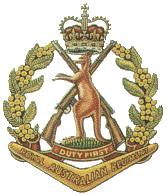
Operation Hammersley: 8 RAR’s Intensive Campaign in Long Hải.
In early 1970, 8 RAR (Royal Australian Regiment) embarked on Operation Hammersley, a critical reconnaissance mission in the Long Hải area of Vietnam. Commencing on February 10th and lasting until March 9th, the operation proved to be a significant chapter in the battalion’s history.
The primary objective of Operation Hammersley was the capture of a substantial bunker complex held by the Vietcong (VC). On February 18th, after the VC defenders withdrew following air raids, 8 RAR successfully seized the complex. For their achievements, the battalion was honoured with the South Vietnamese Government’s Meritorious Unit Commendation, including the Cross of Gallantry with Palm Unit Citation.
During the operation, 8 RAR engaged in patrols and ambushes, effectively disrupting VC troop movements. The success of these operations contributed to the accolades awarded to the battalion. However, the tour was not without sacrifices, as by October 1970, 8 RAR had lost 18 men and had 108 wounded.
Operation Hammersley commenced as a routine security operation, with C Company, 8 RAR, supported by a troop of M113A1 Armoured Personnel Carriers (APC), Centurion tanks, and a mortar section from 8 RAR’s Support Company. The operation aimed to protect 17 Construction Squadron, Royal Australian Engineers, at a quarry in the western foothills of the Long Hai hills.
Second Lieutenant Peter Lauder’s courageous leadership during an ambush on February 15th led to the successful capture of a company-sized Viet Cong group, earning him the Military Cross. Despite subsequent attempts to engage the D445 Battalion, the Australians faced challenges, including delayed B-52 bombings and frustration over missed opportunities.
C Company, 8 RAR, mounted in M113 Armoured Personnel Carriers, led an advance on the bunker system on February 18th. However, they encountered fierce resistance, resulting in casualties and the loss of an APC. The wait for B-52s allowed the D445 Battalion to escape, leaving the Australians frustrated at the missed opportunity.
Despite three unsuccessful attacks, the Australians continued the operation, calling in airstrikes and B-52 bombings. However, the D445 Battalion managed to escape, leaving the Australians with regret. The frustration persisted as mine incidents occurred, causing casualties among the Australians.
On February 28th, tragedy struck when Sergeant Bill Hoban’s platoon encountered a mine. Seven men, including Hoban, were killed, and 13 others were wounded. A subsequent incident involving a RAAF Iroquois helicopter triggered another mine, resulting in additional casualties.
The operation continued with further incidents, including a booby trap that wounded seven Australians on March 6th. Operation Hammersley concluded on March 9th, marking a costly but impactful campaign for the 1st Australian Task Force. Despite suffering losses, the task force inflicted heavy casualties on the enemy, with significant captures of weapons, ammunition, and materiel.
Operation Hammersley stands as a testament to the challenges faced by 8 RAR in their efforts to pacify Phuoc Tuy and engage the enemy in the Long Hải region during the Vietnam War.





For detail on 8RAR’s Operation Hammersley, see also the AWM’s WARTIME Magazine, Issue 90 , pp.28-35 of Autumn 2020 – by AWM historian Ashley Ekins. Titled: “Looking for Trouble – Operation Hammersley penetrated the Viet Cong stronghold in the Long Hai hills ((ie: the Việt Cộng s Minh Đạm Secret Zone)), but at a high cost.”
The article includes: “The task force signals intelligence unit had ‘fixed’ the location of a D445 Battalion radio in the Long Hais, just two kilometres east of FSB Isa, indicating the likely presence of the enemy battalion (as well as the HQ company that carried that radio). Unaccountably, this information was not passed on before Operation Hammersley began.”
Fighting against 8RAR and other 1ATF elements during Operation Hammersley is not mentioned in either the D445 or the D440 official histories. Rather, their histories of early 1970 focus on penetrating the defences of Đất Đỏ District Town – including the Australian-laid minefield/ “emplacements/bunker systems” . The 1986 VC Long Đất history however notes their For detail on 8RAR’s Operation Hammersley, see also the AWM’s WARTIME Magazine, Issue 90 , pp.28-35 of Autumn 2020 – by AWM historian Ashley Ekins. Titled: “Looking for Trouble – Operation Hammersley penetrated the Viet Cong stronghold in the Long Hai hills ((ie: the Việt Cộng s Minh Đạm Secret Zone)), but at a high cost.”
The article includes: “The task force signals intelligence unit had ‘fixed’ the location of a D445 Battalion radio in the Long Hais, just two kilometres east of FSB Isa, indicating the likely presence of the enemy battalion (as well as the HQ company that carried that radio). Unaccountably, this information was not passed on before Operation Hammersley began.”
Fighting against 8RAR elements during Operation Hammersley is not mentioned in either the D445 or the D440 official histories. Rather, their histories of early 1970 focus on penetrating the defences of Đất Đỏ District Town – including the Australian-laid minefield/”emplacements/bunker systems” . The 1986 VC Long Đất District history however notes their District’s casualties included: “12 killed on 16 February; 8 killed on 27 February.”
While – as noted, the Viet Cong D445 and D440 published histories are vague on engagements during 1 ATF’s Operation Hammersley, some detail is included in the Đất Đỏ District History 2006 including: “From 10 February 1970, the enemy mobilised a combined American-Australian battalion – with New Zealand artillery support and more than 40 tanks, to attack continuously into the Minh Đạm base , flatten the terrain, and widen Upper Route 44 by one metre and Lower Route 44 by 10 metres. They attacked into our revolutionary base, using mechanised vehicles to destroy the jungle from Dinh Cố to Nước Ngọt. For months, strategic B52 aircraft flew tens of sorties dropping bombs on the Minh Đạm (including even 5 tonne bombs). The enemy spread devastating chemical poisons over the jungle areas of Phước Lợi, Hội Mỹ and Đất Đỏ, and destroyed the land with the aim of driving out the revolutionary forces.”
Communist writings tend to refer to the Long Hải Mountains as the Minh Đam Secret Zone. – see the 2006 Minh Dam 64-page history booklet. Near Phuoc Hai village, there is a Minh Dam memorial complex – ie: a large temple and a trail that leads up into the granite boulder hills – past a VC-era hospital and workshops, to a formal museum.